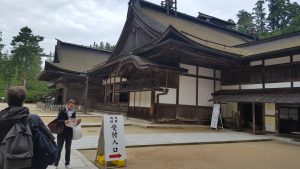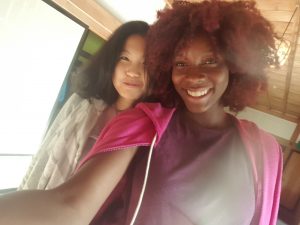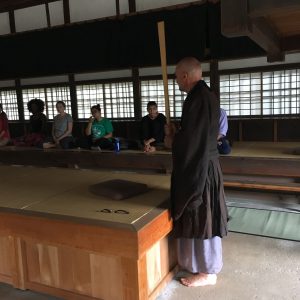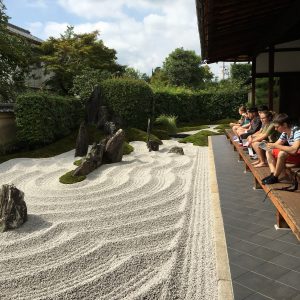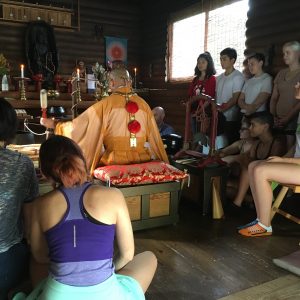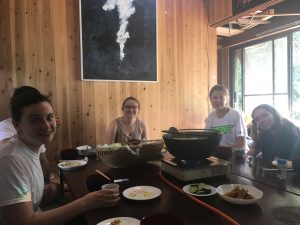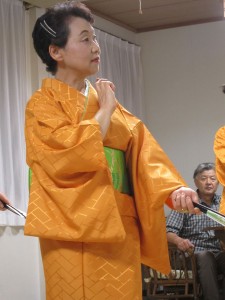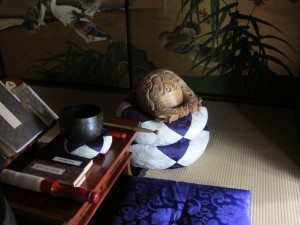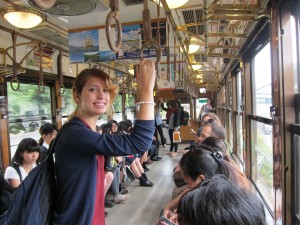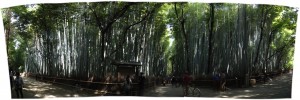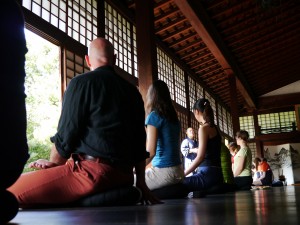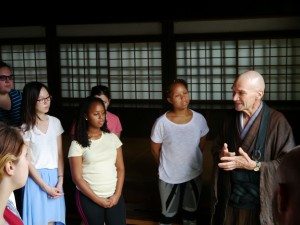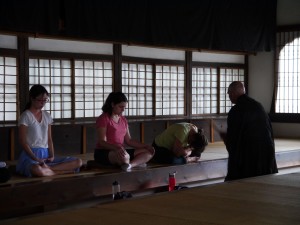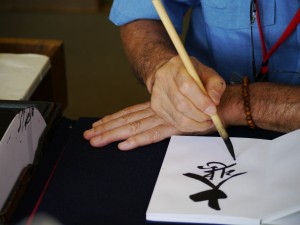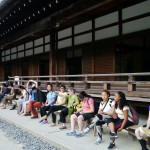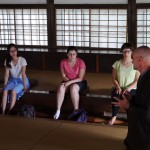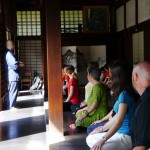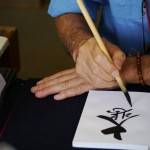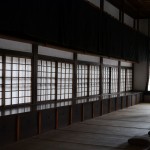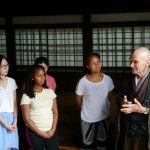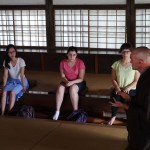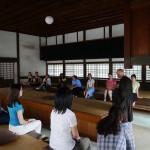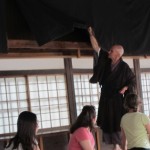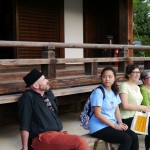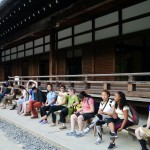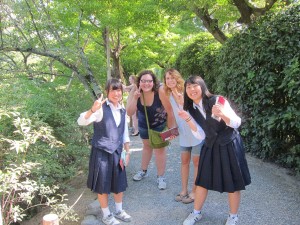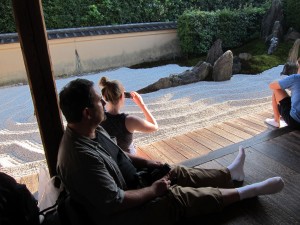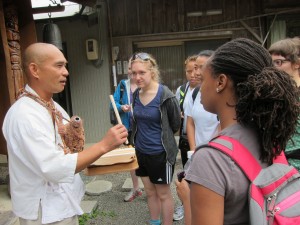
Kosho briefs students on the morning
I am sitting on the porch at Rengejô’in on Mt. Koya, where we will be staying for the next three nights. The students are sleeping on futons spread on the tatami in four rooms adjacent to mine, I can hear their voices through the sliding shoji screens. My room faces onto a moss garden, beautifully lit. The rooms on the opposite side face a beautiful karensansui, a dry rock garden. We arrived here just in time for the evening meditation, led by the head priest of this temple (who is also the head of the Shingon sect, headquartered here). It was dim in the low-ceilinged main hall, lit with elaborately perforated gold lanterns and a few candles in the front. It was warm, enclosed, still and very silent. We sat for 30 minutes, then heard a short talk from the priest about meditation.

Hiking up the gorge, this was a relatively easy section
We spent the morning and early afternoon in Kumano, hiking a rough trail led by Kosho, a priest in the esoteric Buddhist tradition, to a waterfall up the mountain. It was a tough hike, we clambered up stone walls on the side of a dam, scrambled across boulder fields, and went up and down ladders over walls. We forded a small stream, hopping from stone to stone and kept a sharp eye out for vines on the ground that could trap a wary ankle. We chanted as we went, “Sange, sange…” and Kosho blew a conch shell from time to time.

Kayla by the waterfall
The waterfall was spectacular, and Kosho did a short ceremony for us there, blessing those who wished while they stood under the waterfall. After a difficult and steep climb we were hot and sweaty. The water was bracingly cold, and standing under it, feeling it pound me and pound around me was a startlingly sacred experience. Afterwards, Kosho played a haunting tune on his ocarina.
We pulled out dry shirts and pack towels and hiked back down the mountain to Kosho’s shrine, where we celebrated a short fire ceremony. Kosho’s practice is rich in postures, his hands move expertly to form mudras and he is precise with beads and sticks. One of the questions my class has been exploring is the role of the body in contemplative practices, so this raises many questions, particularly in this sort of setting where the ritual work is not so much an individual act, but one that is shared.
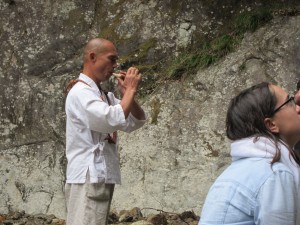
Kosho plays the ocarina under the waterfall
The hike down was as much a challenge as the walk up, and the faculty members asked the students if when we asked them on the application for the program if they were willing to “travel rough” was what they imagined?
It was a windy 4 hours on the bus from Kumano to Koya, but we made it in time for the evening meditation and dinner. Towards the end of dinner, the previous head priest’s wife came out. She is 93 years old, and studied English in Toyko just before World

A noodle feast after a rough hike
War II. She spoke about her experiences in Koyasan during that period, and gave us a short orientation to the history (sacred and secular) and geography of the area. An amazing story to listen to.
We swtich to a more contemplative pace here, with time to walk to the many temples, and the graveyard at Okuno-in, and to sit in the gardens here and experience more deeply the ways in which these spaces work to support the work of contemplation.

